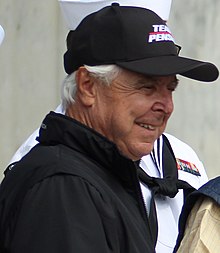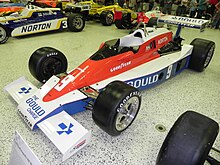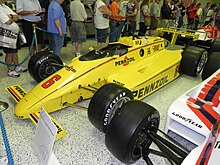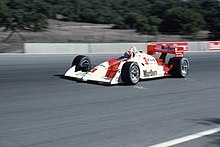
Arie Luijendijk, nicknamed "The Flying Dutchman," is a Dutch former auto racing driver, and winner of the 1990 and 1997 Indianapolis 500 races. He was inducted into the Indianapolis Motor Speedway Hall of Fame in 2009, and the Motorsports Hall of Fame of America in 2014.

Anthony Joseph Foyt Jr. is an American former racing driver who competed in numerous disciplines of motorsport. He is best known for his open wheel racing career, and for becoming the first four-time winner of the Indianapolis 500. He holds the most American National Championship titles in history, winning seven.
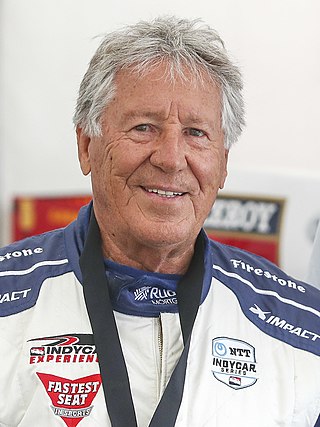
Mario Gabriele Andretti is an American former racing driver. He is widely regarded among the most successful drivers in the history of motorsports. Andretti is one of only three drivers to have won races in Formula One, IndyCar, the World Sportscar Championship, and NASCAR. He has also won races in midget car racing and sprint car racing.

Robert Woodward Rahal is an American former auto racing driver and current team owner of Rahal Letterman Lanigan Racing. As a driver he won three championships and 24 races in the CART open-wheel series, including the 1986 Indianapolis 500. He also won the Indianapolis 500 in 2004 and 2020 as team owner for Buddy Rice and Takuma Sato, respectively.

Edward McKayCheever Jr. is an American former racing driver who raced for almost 30 years in Formula One, sports cars, CART, and the Indy Racing League. Cheever participated in 143 Formula One World Championship races and started 132, more than any other American, driving for nine different teams from 1978 through 1989. In 1996, he formed his own IRL team, Team Cheever, and won the 1998 Indianapolis 500 as both owner and driver. The team later competed in sports cars.

Alfred Unser was an American automobile racing driver, the younger brother of fellow racing drivers Jerry and Bobby Unser, and father of Al Unser Jr. He was the second of four men to have won the Indianapolis 500 four times, the fourth of five to have won the race in consecutive years, and the winner of the National Championship in 1970, 1983, and 1985. The Unser family has won the Indy 500 a record nine times. He was the only person to have both a sibling (Bobby) and child as fellow Indy 500 winners. Al's nephews Johnny and Robby Unser have also competed in that race. In 1971, he became the only driver to date to win the race on his birthday.

Robert William Unser was an American automobile racer. At his induction into the Motorsports Hall of Fame of America in 1994, he had the fourth most IndyCar Series wins at 35. Unser won the 1968 and 1974 United States Automobile Club (USAC) national championships. He won the Pikes Peak International Hill Climb overall title 10 times.

John Sherman "Johnny" Rutherford III, also known as "Lone Star JR", is an American former automobile racing driver. During an Indy Car career that spanned more than three decades, he scored 27 wins and 23 pole positions in 314 starts. He became one of six drivers to win the Indianapolis 500 at least three times, winning in 1974, 1976, and 1980. He also won the CART championship in 1980.

Alfred Unser Jr. – nicknamed "Little Al" to distinguish him from his father, Al Unser – is an American retired racing driver. Known primarily for his Championship car career, Unser won two CART championships, and is a two-time winner of the Indianapolis 500.
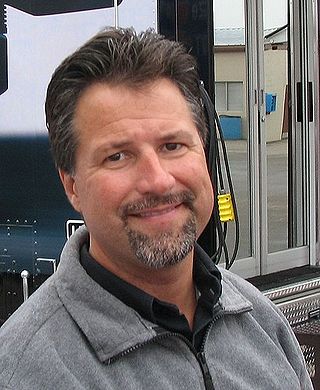
Michael Mario Andretti is an American former racing driver, and current team owner. Statistically one of the most successful drivers in the history of American open-wheel car racing, Andretti won the 1991 CART championship, and amassed 42 race victories, the most in the CART era and fourth-most all time. Since his retirement, Andretti has owned Andretti Autosport, which has won four IndyCar Series championships and five Indianapolis 500 races. He is the son of Mario Andretti, a multi-time champion, and is the father of IndyCar Series driver Marco Andretti.

Daniel John Sullivan III, better known as Danny Sullivan, is an American former racing driver. He earned 17 wins in the CART Indy Car World Series, including the 1985 Indianapolis 500. Sullivan won the 1988 CART Championship, and placed third in points in 1986. Sullivan also scored a victory in IROC. He competed in the 1983 Formula One season with Tyrrell, scoring 2 championship points.
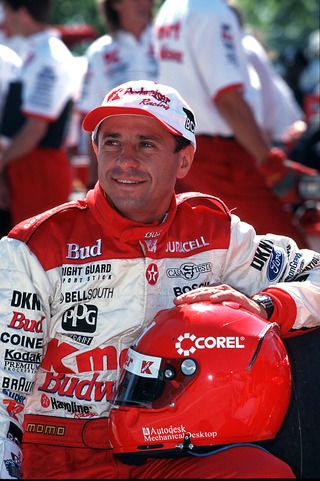
Roberto Pupo Moreno, usually known as Roberto Moreno and also as Pupo Moreno, is a Brazilian former racing driver. He participated in 75 Formula One Grands Prix, achieved 1 podium, and scored a total of 15 championship points. He raced in CART in 1986, and was Formula 3000 champion before joining Formula One full-time in 1989. He returned to CART in 1996 where he enjoyed an Indian summer in 2000 and 2001, and managed to extend his career in the series until 2008. He also raced in endurance events and GT's in Brazil, but now works as a driver coach and consultant, and although this takes up a lot of his time, he is not officially retired yet, as he appears in historic events. Away from the sport, he enjoys building light aeroplanes.

Massimiliano "Max" Papis is an Italian professional motorsport driver who has competed in several top-level motorsports events such as Le Mans 24 Hours, Formula One and Champ Car. He has three Champ Car victories. He is the son-in-law of Emerson Fittipaldi. Papis also currently drives in the NASCAR Whelen Euro Series.
Gordon Johncock is an American former racing driver. He won the Indianapolis 500 twice, and was the 1976 USAC Marlboro Championship Trail champion.
John Kevin Cogan is a former race car driver who drove in Formula One from 1980 to 1981. Driving a RAM Williams in the 1980 Canadian Grand Prix, he failed to qualify, suffering the same result driving for Tyrrell at the 1981 US GP West. He then moved over to Indy cars in 1982 but his career was cut short by a series of accidents.
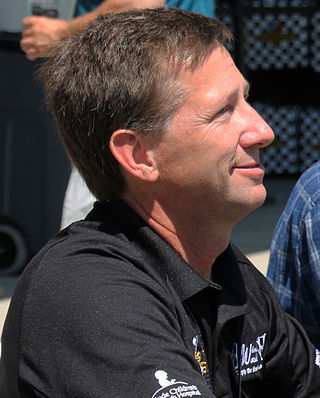
John Andrew Andretti was an American professional race car driver. He won individual races in CART, IMSA GTP, Rolex Sports Car Series, and NASCAR during his career. A member of the Andretti racing family, he was the son of Aldo Andretti, older brother of racer Adam Andretti, nephew of Mario Andretti, and the cousin to CART drivers Michael and Jeff Andretti. He is also the first cousin once-removed of Marco Andretti.
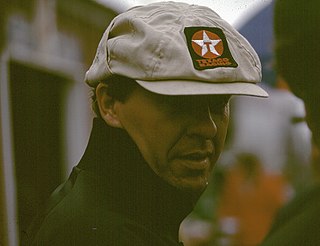
Thomas Edsol Sneva is a retired American race car driver who won the Indianapolis 500 in 1983. He primarily raced in Indy cars, and was named to the Motorsports Hall of Fame of America in 2005.

Bruno Junqueira is a Brazilian race car driver who most recently competed in the IRL IndyCar Series. He is a former Formula 3000 champion and three-time runner-up in the Champ Car World Series.

Oriol Servià Imbers is a Spanish racing driver who competes part-time in the IndyCar Series. He raced for Dragon Racing in the 2014–15 Formula E season, and left the series prior to the 2015 Miami ePrix to become managing director for the technical and commercial partnerships of Dragon Racing. Servià holds a degree in mechanical engineering from the Polytechnic University of Catalonia. Since 2018 he also serves as pace car driver at IndyCar races outside the Indianapolis 500.

Simon Pierre Michel Pagenaud is a French professional racing driver, who last drove the No. 60 Honda for Meyer Shank Racing in the NTT IndyCar Series. After a successful career in sports car racing that saw him taking the top class championship title in the 2010 American Le Mans Series, he moved to the Indycar Series where he became the 2016 IndyCar champion and the 2019 Indianapolis 500 winner, becoming the first driver born in France to win the Indianapolis 500 since Gaston Chevrolet in 1920 and the first polesitter to have won the race since Helio Castroneves in 2009.
